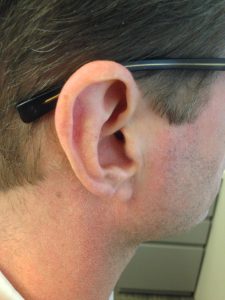Do Cuts Heal Faster with a Bandage?
A very common old wives’ tale is to let your cuts or wounds heal without a protective covering, in the belief they will form a scab and heal faster. We hate to break it to those who follow the rule, but this is not correct.
Leaving a cut exposed to the air is like leaving your front door open on a windy day. Eventually, you’re going to get dirt and debris in your house. Airing it out also makes it more likely that the wound will leave a more noticeable scar.
The best thing you can do for a cut or wound is keep it clean, moist, and covered.
Why should I cover cuts, scrapes, or wounds?
- When the cut dries without a clean, protective covering, it will form a scab. The scab will stop the wound from bleeding, but it will also partially block new cells from replacing the lost, dead, and damaged cells. The crusty scab can also make scarring more pronounced.
- When the wound is moist, new skin cells move in and replace the damaged skin cells more readily.
- A wound that is kept moist is less painful.
What’s the best way to dress a cut or wound?
- Clean it thoroughly.
- If it’s a new cut, you can use an antibiotic ointment (such as Neosporin) or spray (such as Bactine) to clean the area.
- Apply a thin film of antibiotic ointment or petroleum jelly (such as Vaseline). This will seal in the moisture and keep air out.
- Cover it with a bandage to keep it moist and to keep dirt and debris from touching the wound.
- In the days that follow, whenever you replace the bandage, apply petroleum jelly to the spot. The key is that it stays continuously moist throughout the healing process. For most minor wounds and cuts, five days should be sufficient.
- Bandaging without the moist barrier is not as effective. It is the petroleum jelly that will keep it moist and keep air out. Also, without the jelly barrier, newly formed skin may stick to the bandage and come off every time you change it.
As an extreme example, I had Moh’s surgery on a visible part of my neck about five years ago. Moh’s surgery is done to remove skin cancer. (I wish someone had given me this information when I was younger!)
Moh’s surgery can leave a large, deep wound. Mine was round, about the size of a dime. The photos are a bit graphic, so I’ll spare you the details. Needless to say, you’d assume it would leave a pretty nasty scar, right?
Wrong.
Here’s a picture of that same spot, now.
Can you even tell where to look? How is that possible? The doctors, nurses, and other staff were all very good at explaining the healing process and procedure to me. I was instructed to keep it covered and continuously moist with Vaseline until new skin formed. They told me it may take up to two months to heal. For the next five weeks, every time I changed the bandage, I covered it with a thin film of Vaseline. It never formed a scab. I never felt any serious pain or discomfort, even when laying on that side. Today, most people cannot even see the scar unless it is pointed out to them.
The bottom line: Keep your wound continuously moist and covered in order to speed up healing, relieve discomfort, and reduce scarring. As a further note, keep the area from getting sunburnt for up to six months in order to further prevent a noticeable scar.
References:
Am J Surg. 1994 Jan;167(1A):2S-6S.
Br J Nurs. 2008 Nov 13-26;17(20):S4-15.
www.ncbi.nlm.nih.gov/pubmed/8109679
www.ncbi.nlm.nih.gov/pubmed/19043322
www.mayoclinic.org/tests-procedures/mohs-surgery/basics/definition/prc-20014261





